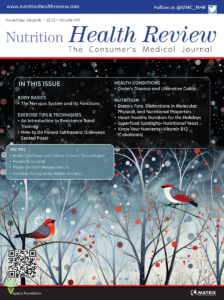
The tiny bumps on the tongue, termed papillae, contain collections of cells known as taste buds.1 Food and drink travels through small openings in the tongue’s surface called taste pores, allowing the inner cells to identify their tastes.1 Common tastes include sweet, umami, sour, salty, bitter, fatty, and metallic.2
The Anatomy of Taste Buds
The three types of papillae include fungiform, circumvallate, and foliate. Fungiform papillae are on the sides and tip of the tongue and contain the most taste buds—about 1,600. Circumvallate papillae are located at the back of the tongue, containing about 250 taste buds. There are about 20 foliate papillae located on the back sides of the tongue, each containing hundreds of taste buds.1 Each individual taste bud contains 50 to 150 taste receptor cells. The receptor cells have microscopic hairs which detect chemicals in food and beverages. Subsequently, the cells communicate taste signals to the brain, where the taste is identified.1
Flavor Detections
Taste buds serve a purpose beyond the ability to simply enjoy food and beverages; rather, their purpose is to collect information on what is being consumed and relay this information to the brain in order to communicate nutritional characteristics of the food being consumed and warn of possible risks.2
For example, sweet-flavored foods indicate the presence of carbohydrates, a source of energy. Salty tastes indicate the presence of salt, which helps maintain water balance and blood circulation throughout the body. Umami, the savory taste, reflects a food’s protein content. Bitter tastes are naturally aversive to protect against consuming poisons, which often taste bitter. Similarly, sour tastes protect against ingesting an excessive amount of acidic food so as to maintain the body’s acid-base balance. Additionally, spoiled food is often accompanied by an unpleasant, acidic taste.2
How Other Senses Play a Role
The concept of taste encompasses not only the taste on one’s tongue, but the scent, texture, and temperature of the food or drink.3 The combination of sight, smell, and taste initiates cephalic phase, an early phase of digestion characterized by acid secretion by the stomach.2 While eating, receptors in the mouth assess the food’s taste, temperature, and texture, prompting the salivary glands to produce saliva, which helps with the processes of chewing and swallowing; if the receptors detect harmful or toxic materials, the body will begin coughing, spitting, or vomiting instead of swallowing.4
Sources
- Cleveland Clinic. Taste buds. Reviewed 7 Feb 2023. https://my.clevelandclinic.org/health/body/24684-taste-buds. Accessed 9 Apr 2024.
- Chaudhari N, Roper SD. The cell biology of taste. J Cell Biol. 2010;190(3):285–296. Erratum in: J Cell Biol. 18;191(2):429
- InformedHealth.org Institute for Quality and Efficiency in Health Care (IQWiG). In brief: How does our sense of taste work? Updated 24 Jan 2023. https://www.ncbi.nlm.nih.gov/books/NBK279408/. Accessed 9 Apr 2024.
- Gravina S, Yep G, Khan M. Human biology of taste. Ann Saudi Med. 2013;33(3):217–222.





